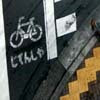Public Broadcasting sustains itself on a combination of foundations, donations, and more specifically, viewer donations. According to current.org, Public Broadcasting grew out of University broadcasting on Radio waves in America, way way back. Since, it has retained a strong tie to the Academic world. Strong appeal to consumers is necessary since the broadcasting can be supported up to 20 percent in revenue through the donation drives. Therefore, the programs must rely upon the 'innate worth' perceived by the audience, Academics working with foundations, and companies who want a by-line with the programs and also donate money to certain works. The lack of commercials is supposed to create a 'free zone', but I do not see this zone as free of influence from political, cultural, and Academic pressures the way I might have five years ago. While there is certainly a certain amount of freedom without the commercial drive, we cannot assume everything we see is 'educational and unbiased.'
Much in the same vein as the supposedly neutral 'encyclopedias' that Said speaks on in Orientalism, the documentary is supposed to be a free zone for commentary. Yet there are still heavy overtures of certain discourses. Japan-o-rama, when combined with a WWII educational video for soldiers, is the inspiration for this project. In both, I saw a strong attempt at authority and yet a flimsy actual product, rather biased. Johnathon Ross is popular at the BBC, evidenced by the fact he has three series, one which ran in chunks of episodes for three seasons, at current, and his work is rather clear evidence of Orientalist discourse still alive in modern, pop and trendy documentary. More serious documentary, on terms of the newsreel, have a much more cut and dry, neutral position, but evidence of their home political climate is still very strong. See Japan's About Face as well as Campaign. Then you have the historical and 'traditional culture' documentary, which take all of the incense smoke images of old Japan, combine them with jidaieki visuals, and make a play out of the events. Academia's influence is very strong in the latter two, I feel, while the more pop culture documentary is often taken on by the amatuer, the non-Academic, and have a more distilled version of current 'popular' impressions from Britain and America about Japan.
Subscribe to:
Post Comments (Atom)

No comments:
Post a Comment